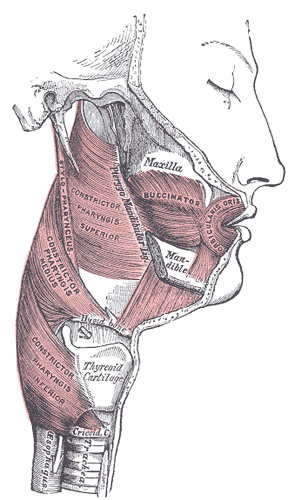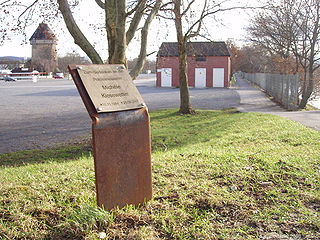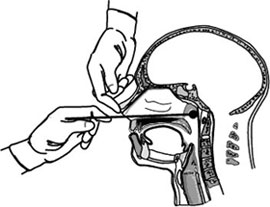DNA paternity testing is the use of DNA profiles to determine whether an individual is the biological parent of another individual. Paternity testing can be especially important when the rights and duties of the father are in issue and a child's paternity is in doubt. Tests can also determine the likelihood of someone being a biological grandparent. Though genetic testing is the most reliable standard, older methods also exist, including ABO blood group typing, analysis of various other proteins and enzymes, or using human leukocyte antigen antigens. The current techniques for paternity testing are using polymerase chain reaction (PCR) and restriction fragment length polymorphism (RFLP). Paternity testing can now also be performed while the woman is still pregnant from a blood draw.

Genetic testing, also known as DNA testing, is used to identify changes in DNA sequence or chromosome structure. Genetic testing can also include measuring the results of genetic changes, such as RNA analysis as an output of gene expression, or through biochemical analysis to measure specific protein output. In a medical setting, genetic testing can be used to diagnose or rule out suspected genetic disorders, predict risks for specific conditions, or gain information that can be used to customize medical treatments based on an individual's genetic makeup. Genetic testing can also be used to determine biological relatives, such as a child's biological parentage through DNA paternity testing, or be used to broadly predict an individual's ancestry. Genetic testing of plants and animals can be used for similar reasons as in humans, to gain information used for selective breeding, or for efforts to boost genetic diversity in endangered populations.

Cotton swabs or cotton buds are wads of cotton wrapped around a short rod made of wood, rolled paper, or plastic. They are most commonly used for ear cleaning, although this is not recommended by physicians. Other uses for cotton swabs include first aid, cosmetics application, cleaning, infant care, and crafts. Some countries have banned the plastic-stemmed versions in favor of biodegradable alternatives over concerns about marine pollution.

The cheeks constitute the area of the face below the eyes and between the nose and the left or right ear. Buccal means relating to the cheek. In humans, the region is innervated by the buccal nerve. The area between the inside of the cheek and the teeth and gums is called the vestibule or buccal pouch or buccal cavity and forms part of the mouth. In other animals, the cheeks may also be referred to as "jowls".
A rape kit or rape test kit is a package of items used by medical, police or other personnel for gathering and preserving physical evidence following an instance or allegation of sexual assault. The evidence collected from the victim can aid the criminal rape investigation and the prosecution of a suspected assailant. DNA evidence can have tremendous utility for sexual assault investigations and prosecution by identifying offenders, revealing serial offenders through DNA matches across cases, and exonerating those who have been wrongly accused.
The oral mucosa is the mucous membrane lining the inside of the mouth. It comprises stratified squamous epithelium, termed "oral epithelium", and an underlying connective tissue termed lamina propria. The oral cavity has sometimes been described as a mirror that reflects the health of the individual. Changes indicative of disease are seen as alterations in the oral mucosa lining the mouth, which can reveal systemic conditions, such as diabetes or vitamin deficiency, or the local effects of chronic tobacco or alcohol use. The oral mucosa tends to heal faster and with less scar formation compared to the skin. The underlying mechanism remains unknown, but research suggests that extracellular vesicles might be involved.

MERRF syndrome is a mitochondrial disease. It is extremely rare, and has varying degrees of expressivity owing to heteroplasmy. MERRF syndrome affects different parts of the body, particularly the muscles and nervous system. The signs and symptoms of this disorder appear at an early age, generally childhood or adolescence. The causes of MERRF syndrome are difficult to determine, but because it is a mitochondrial disorder, it can be caused by the mutation of nuclear DNA or mitochondrial DNA. The classification of this disease varies from patient to patient, since many individuals do not fall into one specific disease category. The primary features displayed on a person with MERRF include myoclonus, seizures, cerebellar ataxia, myopathy, and ragged red fibers (RRF) on muscle biopsy, leading to the disease's name. Secondary features include dementia, optic atrophy, bilateral deafness, peripheral neuropathy, spasticity, or multiple lipomata. Mitochondrial disorders, including MERRFS, may present at any age.

The buccal space is a fascial space of the head and neck. It is a potential space in the cheek, and is paired on each side. The buccal space is superficial to the buccinator muscle and deep to the platysma muscle and the skin. The buccal space is part of the subcutaneous space, which is continuous from head to toe.

New England Biolabs (NEB) is an American life sciences company which produces and supplies recombinant and native enzyme reagents for life science research. It also provides products and services supporting genome editing, synthetic biology and next-generation sequencing. NEB also provides free access to research tools such as REBASE, InBASE, and Polbase.

The nasolabial folds, commonly known as "smile lines" or "laugh lines", are facial features. They are the two skin folds that run from each side of the nose to the corners of the mouth. They are defined by facial structures that support the buccal fat pad. They separate the cheeks from the upper lip. The term derives from Latin nasus for "nose" and labium for "lip". Other people suggest the term melolabial fold, or the lip-cheek fold or groove. It is also known as the nasolabial sulcus.

The Phantom of Heilbronn, often alternatively referred to as the "Woman Without a Face", was a hypothesized unknown female serial killer whose existence was inferred from DNA evidence found at numerous crime scenes in Austria, France and Germany from 1993 to 2009. The six murders among these included that of police officer Michèle Kiesewetter, in Heilbronn, Germany, on 25 April 2007.
Buccal speech is an alaryngeal form of vocalization which uses the inner cheek to produce sound rather than the larynx. The speech is also known as Donald Duck talk, after the Disney character Donald Duck.

Buccal fat pad extraction or buccal fat removal is a plastic surgery procedure that removes a piece of buccal fat-pad tissue from each side of the face. This reduces the appearance of cheek puffiness, creating a sharper jawline. The amount of fat removed varies based on the desired facial shape. It is a strictly cosmetic surgery.
Rape investigation is the procedure to gather facts about a suspected rape, including forensic identification of a perpetrator, type of rape and other details.

In medicine, sampling is gathering of matter from the body to aid in the process of a medical diagnosis and/or evaluation of an indication for treatment, further medical tests or other procedures. In this sense, the sample is the gathered matter, and the sampling tool or sampler is the person or material to collect the sample.
Rapid DNA describes the fully automated process of developing a CODIS Core STR profile or other STR profile from a reference sample buccal swab. The “swab in – profile out” process consists of automated extraction, amplification, separation, detection and allele calling without human intervention. An instrument designed to perform such rapid DNA analysis is called a DNA "magic box" by enforcement authorities.
Maryland v. King, 569 U.S. 435 (2013), was a decision of the United States Supreme Court which held that a cheek swab of an arrestee's DNA is comparable to fingerprinting and therefore, a legal police booking procedure that is reasonable under the Fourth Amendment.

A nasopharyngeal swab is a device used for collecting a sample of nasal secretions from the back of the nose and throat. The sample is then analyzed for the presence of organisms or other clinical markers for disease. This diagnostic method is commonly used in suspected cases of whooping cough, diphtheria, influenza, and various types of diseases caused by the coronavirus family of viruses, including SARS, MERS, and COVID-19.

The COVID-19 pandemic has created and popularized many terms relating to disease and videoconferencing.











